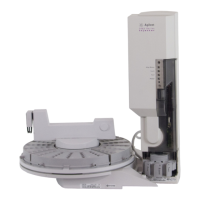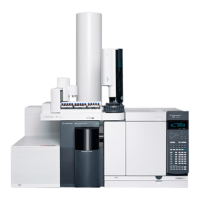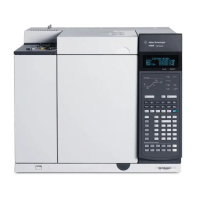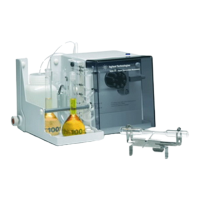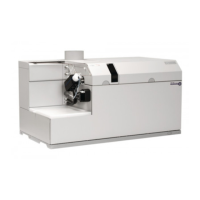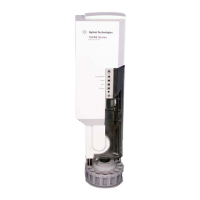APPENDIX - Examples
Agilent 7100 CE in Empower Environment 41
Example: Indirect detection using the Plating Bath Buffer
A test method can be created using the Plating Bath Buffer for testing the
indirect detection functions. The following reagents and parameters can be
used:
Capillary: Fused silica capillary 50 µm ID, 80.5 cm total (72 cm effective)
(G1600-62211)
Plating Bath Buffer (Agilent: 5064-8236)
Home vials: 1 and 2 (filled with electrolyte solution)
Sample: Suitable Plating Bath Mixture (laboratory made)
Voltage: -30 kV
Temperature: 25°C
Stop time: 15 min
Preconditioning: 240 s (from electrolyte vial 3 into waste vial)
Injection:
1 Injection vial to outlet vial: 50 mbar for 10 s
2 Post-injection: 50 mbar for 5 s (from inlet vial to outlet vial)
DAD: Signal A: 350 nm (BW 20 nm), reference: 275 nm (BW 10 nm)
Signal B: 275 nm (BW 10 nm), reference: 350 nm (BW 20 nm)
Peak width: >0.025 min (10 Hz)
Timetable: 1.0 min Balance
Comparing the reversed wavelength the peaks can be shown as positive or
negative peaks.
Figure 29 Indirect detection
Signal A: 350 nm/BW 20 nm, Ref 275 nm/BW 10 nm
Signal B: 275 nm/BW 10 nm, Ref 350 nm/BW 20 nm
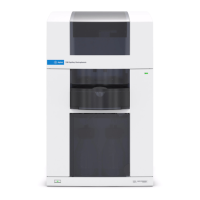
